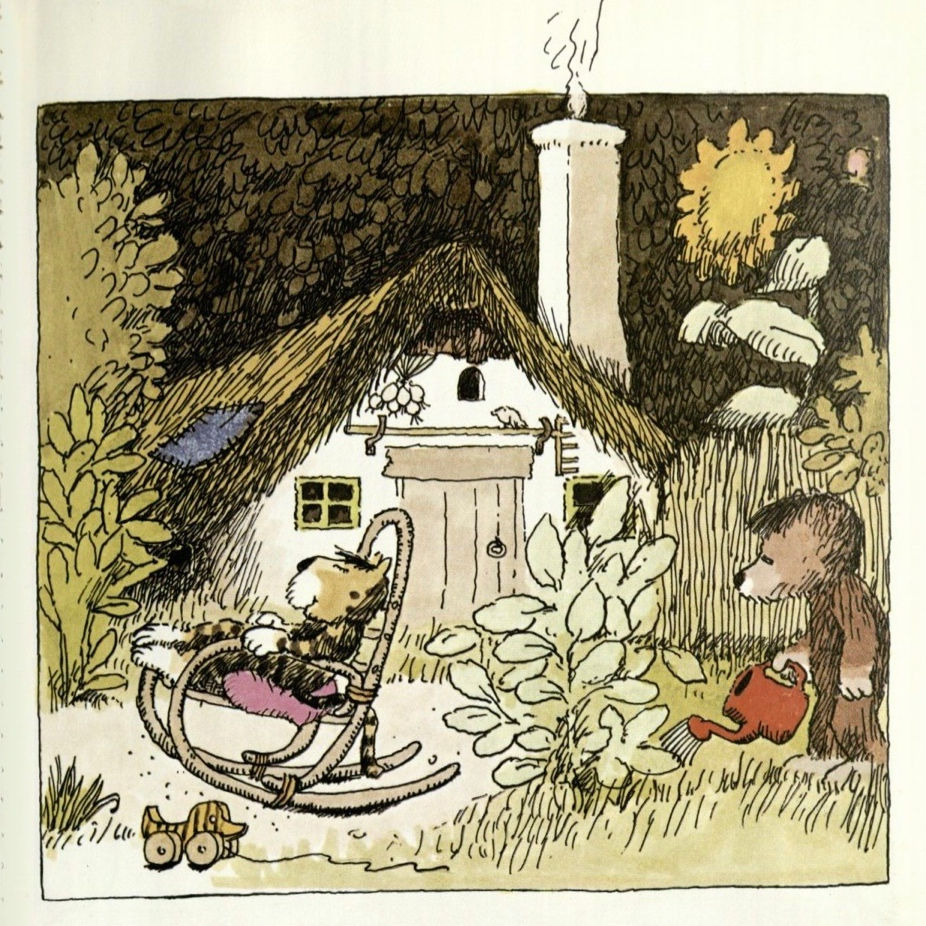Embracing and Celebrating Difference in Janosch’s Tiger and Bear Books
- René Fleischbein

- Mar 5, 2019
- 4 min read

EDITED: I have updated the language of this post after a few comments made me aware that the words “tolerance” and “lifestyle” are problematic concepts. I apologize for the phrasing of my original post. It was not my intention to disparage LGBTQ communities or individuals. I recognize now the implications of my phrasings. I wish to extend my sincere thanks to those who responded with advice about how to approach this topic and what phrases would work better for this post. I hope that readers who view this revision will read the original post and the comments, so that we may all continue to learn from each other.
At a time when much of the world seems divided, from world states to individuals of different races, religions, and sexual orientation, the celebration of differences as found in the lessons from German author Janosch’s picture books featuring his iconic characters, Bear and Tiger, provides a respite from reality—a reminder that diversity in identities and relationships enrich life. Janosch (b. Horst Eckert, 1931) has published over 150 books in Germany since 1960. His books have been translated into 30 languages and have won numerous awards. His Tiger and Bear books are among his most popular works.
Janosch began publishing children’s picture books in Germany in the 1960s. His Tiger and Bear books create inclusivity by giving voice and representation to marginalized groups.
The subtle lessons of embracing and celebrating differences in the Tiger and Bear books provide a respite from social constrictions and a reminder that living in harmony is achievable. The title characters Tiger and Bear are both clearly identified as male and as sharing a domestic space. For example, in Oh, Wie Schön ist Panama (1978), Tiger and Bear are both referred to with the masculine pronoun “er” or “he,” and the masculine article “der” which is a gendered article of “the.” Further, the story describes their idyllic, pastoral life in a cozy little house with a chimney, on a riverbank, surrounded by trees. This depiction of a blissful home life continues to celebrate inclusivity.

As Bear is fishing one day, he finds a box that smells like bananas and has the word “Panama” written on it. Bear runs home to tell Tiger about Panama and they talk until late into the night. The image of them talking demonstrates the domestic space and interaction of a committed couple.

The narrative follows Tiger and Bear as they set out in search of Panama. In their travels, they encounter several other animals, including a rabbit and a hedgehog who invite them to spend the night at their house. The illustration of Tiger and Bear at Rabbit and Hedgehog’s house provides yet another example of how Janosch’s books promote inclusivity.

Tiger and Bear sit close together, their arms around each other, and Bear has his hand or paw on Tiger’s knee, as they tell the Rabbit and the Hedgehog about Panama. The body language of the pair indicates that they are more than friends or comrades. They are a couple. Rabbit and Hedgehog, sitting across from Tiger and Bear, listen attentively, demonstrating that the behavior of Tiger and Bear, their closeness and their bond, is perfectly ordinary for the others to witness. And if these other characters are comfortable with the open displays of affection between Tiger and Bear, readers may also be comfortable with such displays, thus fostering a more open, embracing, and accepting community.
The use of animals to foster appreciation for diversity has been challenged by various critics, including Darren Chetty, who argues that such stories avoid addressing racism, or in this case homophobia, and can thus be counterproductive to their aims. Janosch’s works can nevertheless be appreciated for providing a counterweight to prejudices against gay people, especially considering that homosexuality was punishable by law in Germany in the years following World War II up until the late 1960s. Although the laws against homosexuality had been repealed by the time that Oh, Wie Schön ist Panama came out, homophobia had not disappeared. The Janosch books sold widely and introduced a happy gay couple to readers who were willing to see the relationship not just as friendship but as love. The books certainly offer clues to read them as such. Janosch’s texts afford the opportunity to promote the celebration of difference between individuals and groups of people who were muted or silenced by society.
The narrative humorously concludes with Tiger and Bear rediscovering their own home in their search for the elusive Panama. They work together as a couple to restore their new-old home to its former tidiness. As with the previous illustration with Rabbit and Hedgehog, Tiger and Bear are pictured in domestic harmony sitting on a comfortable couch in their perfect cozy little house.

They sit together as a loving, committed couple, subtly promoting equitableness for others. The rapport created through words and pictures, supporting the affectionate partnership of Tiger and Bear, reinforces themes of inclusivity that may be embraced by the entire community.

ABOUT THE AUTHOR: René Fleischbein earned her Ph.D. in children’s literature at The University of Southern Mississippi where she examined the role of critical literacy in challenging the status quo of twentieth century English children’s literature. Her work has been published in the Journal of the Fantastic in the Arts and the International Journal of Multicultural Education, and she has presented her research at conferences for international organizations such as the Children’s Literature Association, the International Association for the Fantastic in the Arts, and the International Society for the History of Rhetoric. In addition to children’s literature, her areas of scholarship include young adult literature, fantasy literature, British literature, and rhetoric and its history. Dr. Fleischbein, a California native, has lived in Germany and Jordan and is currently an Instructor of English at the University of South Alabama.














Comments